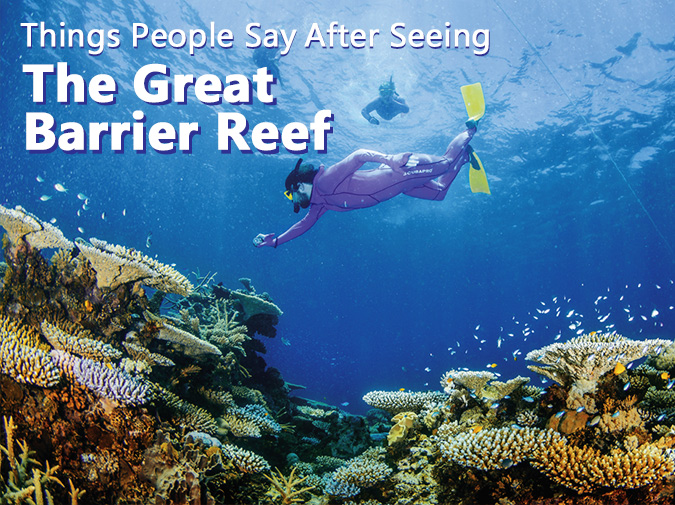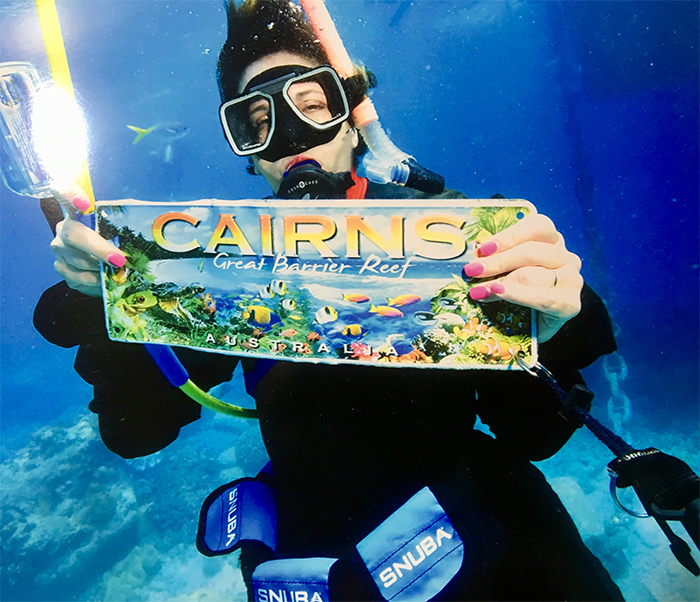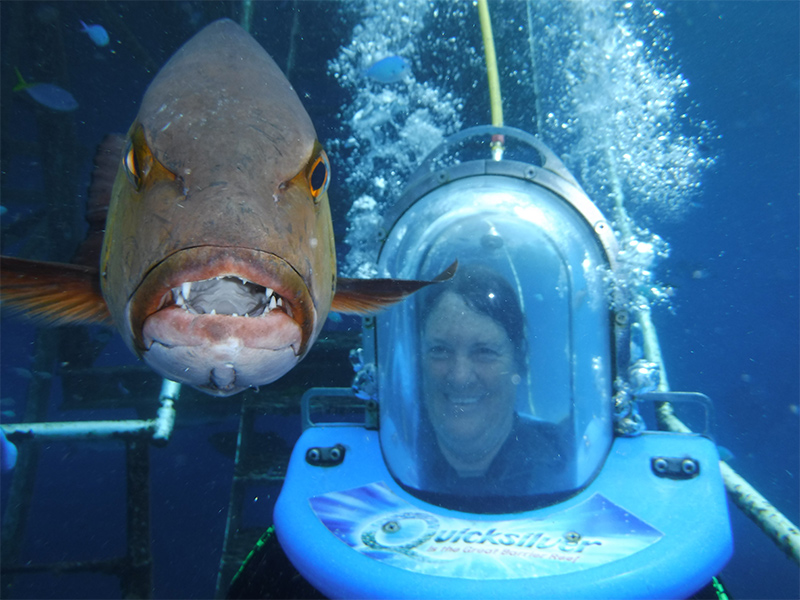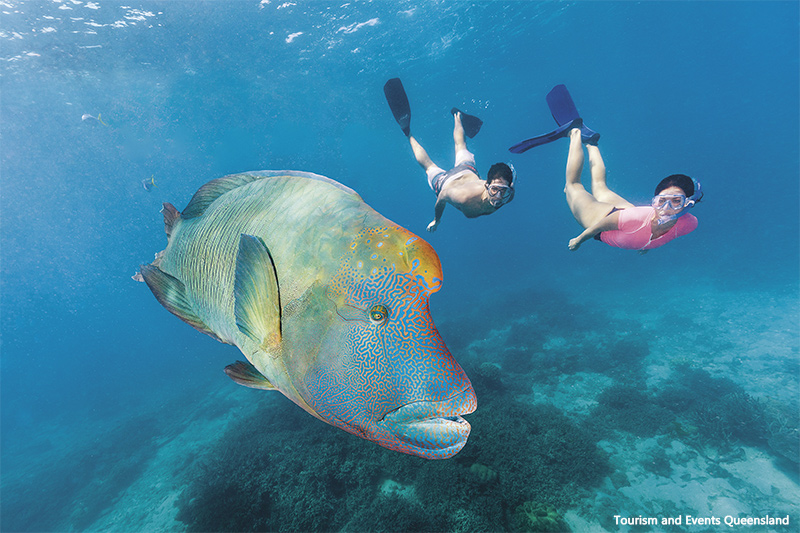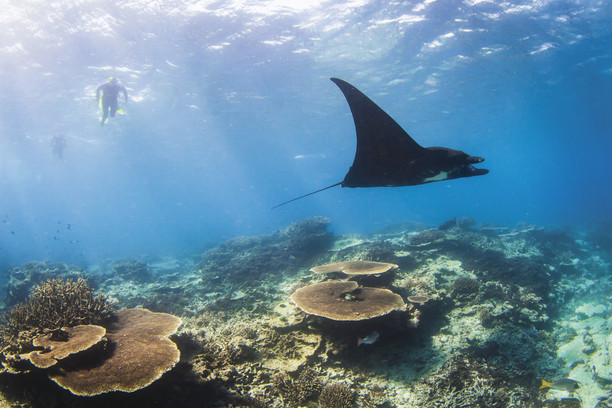Forever a huge draw to Australia, seeing the Great Barrier Reef never fails to inspire a huge rush of emotions.
As one of the seven natural wonders of the world, the reef is on the bucket list for nature-lovers and travelers alike.
But what is seeing the reef really like?
Are the colors and marine life as vibrant as you see in the postcards?
Is the reef still quite a sight to see?
Our clients weigh in on their Great Barrier Reef experience – and some unexpected surprises.
“We loved the helicopter ride at the reef because it gave us a feel for how large the reef is.”
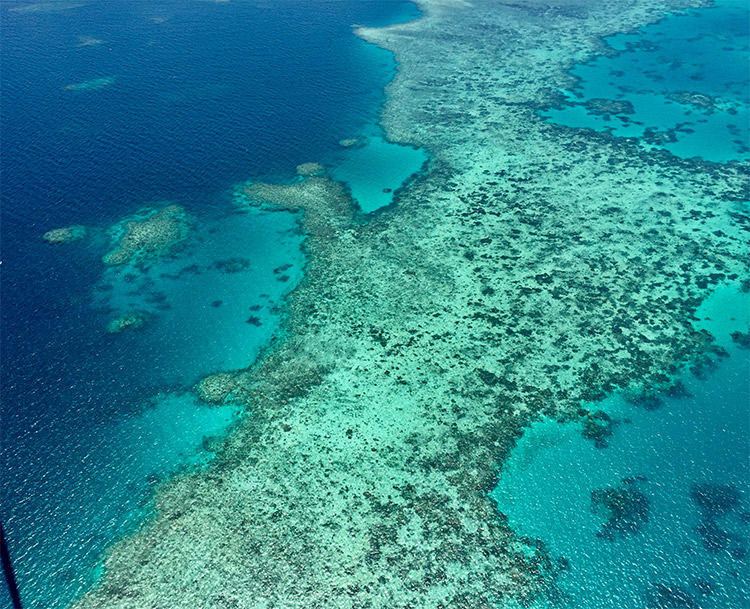
Photo by: Sheri Hardin
With a scenic helicopter ride over the reef, Sheri Hardin was able to take in the immense size of the reef from a different perspective.
When you’re snorkeling up close to intricate coral gardens and gazing at the colors around you, it’s easy to forget the enormous size of the reef.
Made up of over 900 islands stretching over 1,600 miles along the coast of Queensland, the reef is approximately the same area size as Japan – and visible from outer space!
This means no two spots of the reef are the same – the marine and reef life in the northern part of the reef is different to that in the south.
But the reef takes on an entirely different look when gazed at from above.
The tantalizing blue waters of the reef blend into almost luminescent shades of turquoise – truly breathtaking to behold.
“I did not know snuba was available but was happy it was. It’s like scuba diving but you pull your tank above you.”
Fascinated with the reef by air, Sheri wanted to go beyond snorkeling to get as up close to the reef as possible.
From glass bottom boats to semi-submersibles, she could easily see the reef without even dipping a toe in the water.
But Sheri felt a little courageous. Though scuba diving seemed daunting, she found the perfect balance with snuba.
With the help of marine biologists, tourism operators are always coming up with new, safe ways to see the reef.
One of these new ways rapidly gaining popularity is snuba, a perfect combination of snorkeling and scuba diving.
After strapping on her snorkeling gear, a snuba harness and light weight belt, Sheri was ready to go.
Breathing from a scuba mouthpiece through a long air line attached to a floating air tank, she explored the reef with ultimate freedom.
No need to come up for air, no heavy equipment weighing her down. No diving experience necessary and easier than snorkeling.
The best part was seeing those hidden sea creatures easily missed by snorkelers!
“The Barrier Reef was great…We were thrilled!”
Although Barbara McHuron is terrified of the water, she was determined to see the reef in its full glory.
Glass bottom boats and semi-submersibles wouldn’t cut it.
After taking swimming lessons just for this trip to the reef, she was ready for a helmet dive.
Another fantastic way for non-swimmers to see the reef, helmet dives allow you to breath normally while walking among the fish and corals.
Once the crew secured the diving helmet on her, Barbara walked down the ramp steps to an underwater reef platform.
She was immediately greeted by curious fish as fascinated with her helmet as she was by them.
“Our favorite moment was when the crew did a fish feeding and the bigger fish came up to the barge.”
On her Great Barrier Reef excursion, Haley Olson and her husband were given stinger suits for protection.
Stinger season was approaching, and it’s much better to be safe than sorry.
This turned out to be a good call after all, as they caught glimpses of jellyfish floating by.
But with the impenetrable protection of their stinger suits and the abundance of marine life in the water below, they quickly forgot about these stingers.
With colorful tropical fish of different sizes and incredible coral formations, it’s easy to get lost in the underwater wonderland of the reef.
Even more amazing is when a gigantic blue fish swims up to you and refuses to leave until you pet him.
Who knew fish could be so social?
On the Great Eight list of the Great Barrier Reef, the curious Humphead or Maori Wrasse fish is known to swim right up to snorkelers and divers.
This large blue fish grows up to 6 feet in length and weighs up to 400 pounds – quite the friendly giant!
Excursions out to the reef often include a fish feeding. Among the hungry frequenters is a Maori wrasse, charming Haley with its friendliness and dazzling shades of blue and green.
“I immediately came back up from the water and cried!”
After donning on her fins and snorkel mask, Gretchen Ibarra carefully lowered herself into the water from the reef pontoon. She couldn’t see any coral at first, as there was something blocking her view.
A giant, curious manta ray had made its way close to Gretchen for a quick ‘hello!’
Gazing at the manta ray for a few moments, she rushed back to the water’s surface, eyes filling with tears.
The crew immediately congratulated her – this was a moment many people only dream about.
Also slated as one of the Great Eight of the Great Barrier Reef, these majestic and harmless creatures are big bucket list items for snorkelers and divers. As shy creatures that keep mostly to themselves, manta rays remain a bit of a mystery.
With a wingspan of up to 22 feet, seeing these creatures up close is an incredible experience you just have to see to believe. It’s like seeing a small car just glide past you underwater!
You’ll find manta rays hanging out in the waters of Lady Elliot Island, Osprey Reef, Heron Island and Lady Musgrove Island. The best time to see them is during the Australian winter months in May and June.
“A lot of people say the Reef is dead, but that’s not true. The locals say it is on a slow recovery right now and is still quite the sight to see!”
Any fears Nicholas Culhane felt on his first diving trip were quelled by the extremely knowledgeable and outgoing crew onboard. His comfort was their utmost priority.
And as often happens – after his first dive, Nicholas couldn’t get enough.
But nothing could prepare him for the exhilarating rush when a sea turtle and 5-foot long reef shark joined him on a swim!
From parrotfish to clownfish to giant clams and reef sharks, the marine life he saw on the outer reef was plentiful and thriving.
More than 1,500 species of fish, over 300 species of molluscs, 30 species of whales and six of the world’s seven species of marine turtles call this reef their home.
Despite recent coral bleaching events affecting coral systems around the globe, the reef remains one of the healthiest and most protected reefs in the world.
Standard excursions out to the reef are joined by marine biologists who provide a wealth of information regarding the health of the reef and marine life.
In fact, tourism operators play an important role in managing its recovery and helping visitors learn about the reef.
Ready to See the Great Barrier Reef?
Arguably Australia’s most precious natural asset, the Great Barrier Reef is a must for any traveler visiting from around the world.
No matter the kind of person you are – whether you’re terrified of the water or can’t get enough – there’s a way to see the reef perfect just for you.
Glorious and packing unexpected surprises, the unparalleled diversity and natural beauty of the reef awaits.
I Want to See the Great Barrier Reef!
You May Also Like:
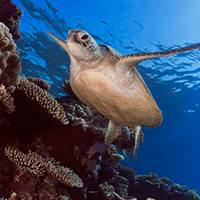
16 Photos That Will Make You Want to Go to Australia Right Now |
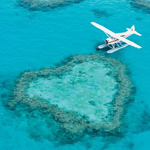
Places to Visit in Australia – A Guide to the Great Barrier Reef |
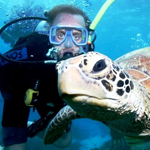
|
Tags: australia, best places to visit, Cairns, destinations, dive, great barrier reef, Places to Visit in Australia, Queensland, scuba, scuba dive, scuba diving, travel destinations, vacation, vacation spots




